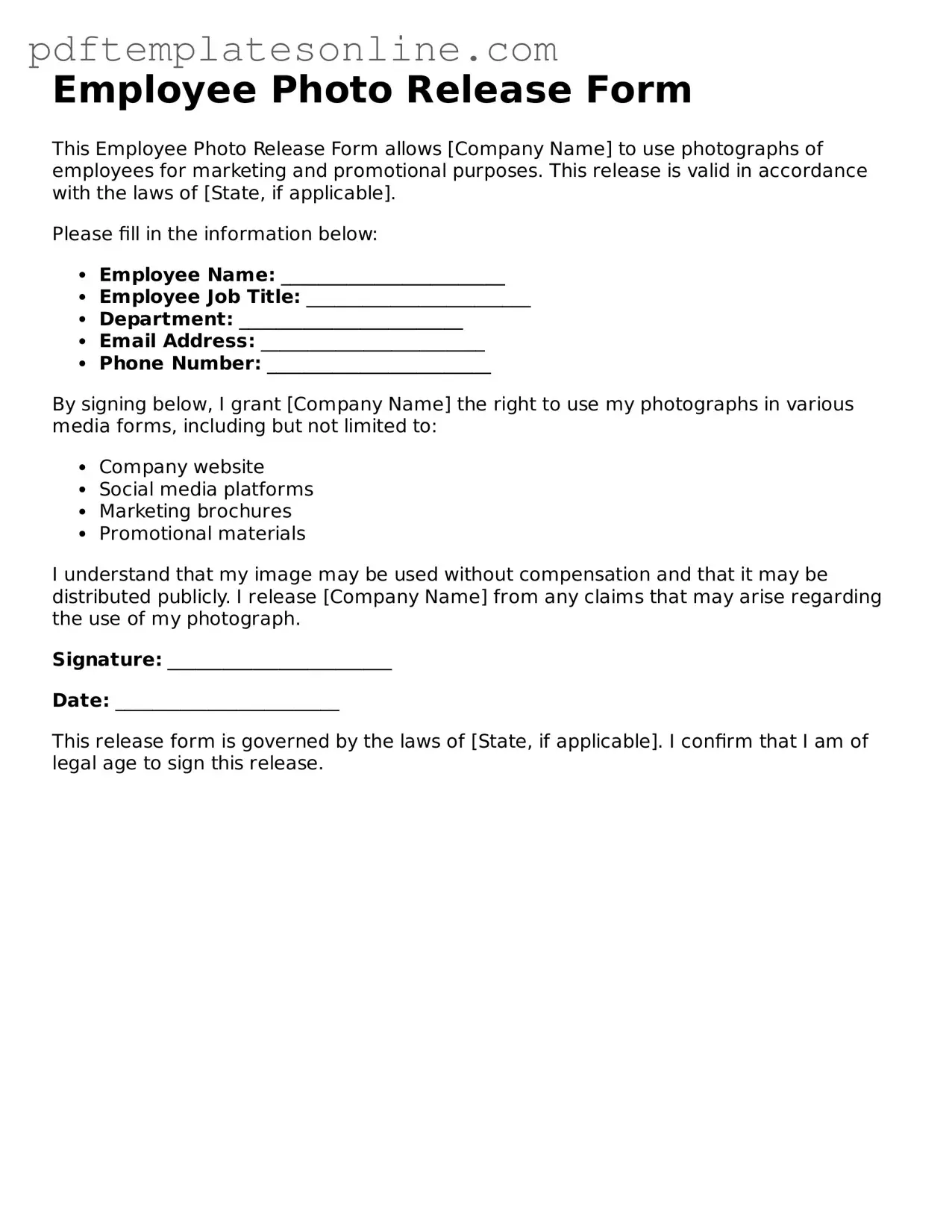Fillable Employee Photo Release Document
The Employee Photo Release form is a document that allows employers to obtain permission from employees to use their photographs for various purposes, such as marketing or promotional materials. This form ensures that employees are aware of how their images may be used and provides legal protection for both parties. Understanding the importance of this form can help foster a transparent and respectful workplace environment.
Access Employee Photo Release Editor Now
